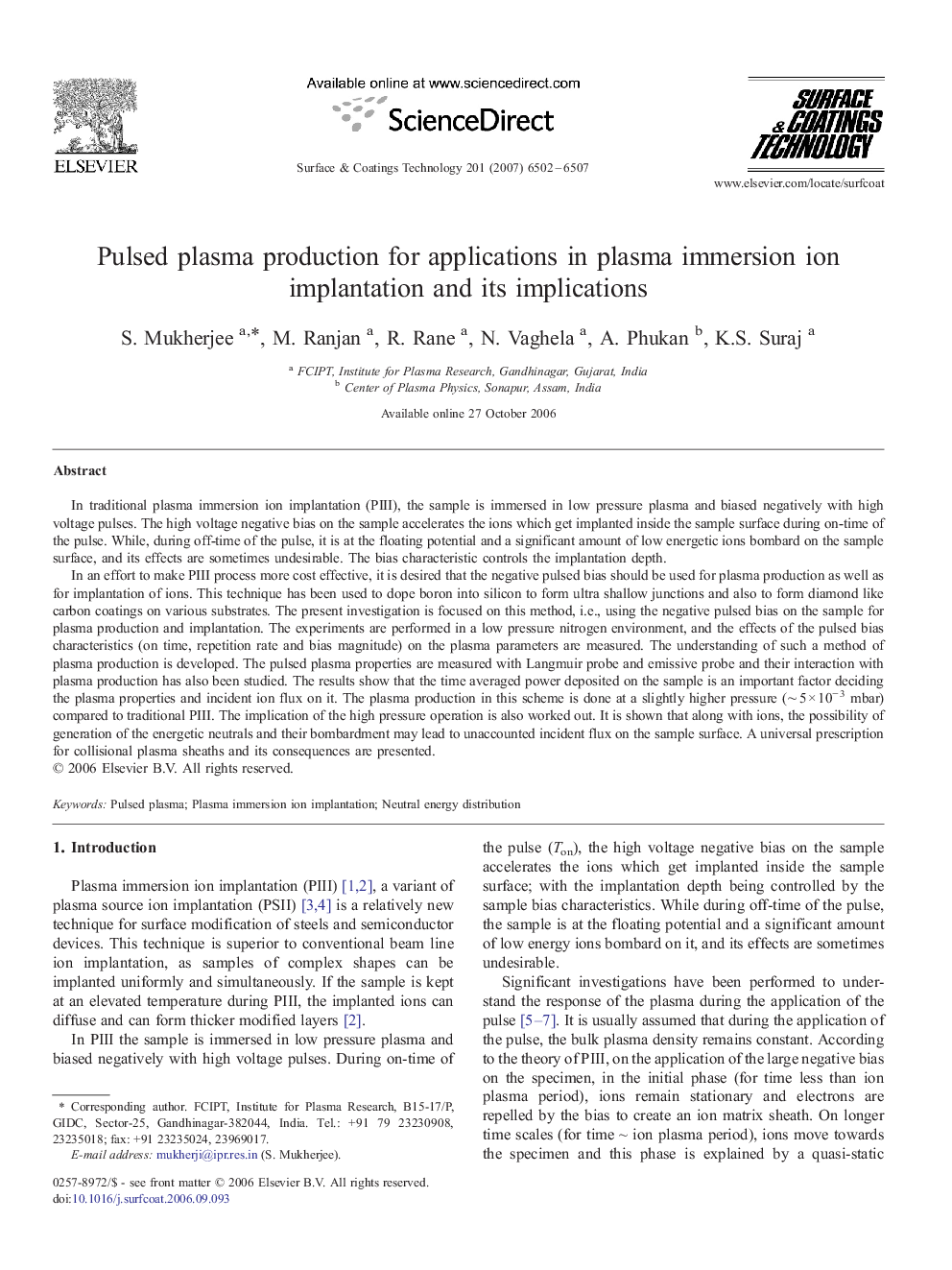| Article ID | Journal | Published Year | Pages | File Type |
|---|---|---|---|---|
| 1660798 | Surface and Coatings Technology | 2007 | 6 Pages |
In traditional plasma immersion ion implantation (PIII), the sample is immersed in low pressure plasma and biased negatively with high voltage pulses. The high voltage negative bias on the sample accelerates the ions which get implanted inside the sample surface during on-time of the pulse. While, during off-time of the pulse, it is at the floating potential and a significant amount of low energetic ions bombard on the sample surface, and its effects are sometimes undesirable. The bias characteristic controls the implantation depth.In an effort to make PIII process more cost effective, it is desired that the negative pulsed bias should be used for plasma production as well as for implantation of ions. This technique has been used to dope boron into silicon to form ultra shallow junctions and also to form diamond like carbon coatings on various substrates. The present investigation is focused on this method, i.e., using the negative pulsed bias on the sample for plasma production and implantation. The experiments are performed in a low pressure nitrogen environment, and the effects of the pulsed bias characteristics (on time, repetition rate and bias magnitude) on the plasma parameters are measured. The understanding of such a method of plasma production is developed. The pulsed plasma properties are measured with Langmuir probe and emissive probe and their interaction with plasma production has also been studied. The results show that the time averaged power deposited on the sample is an important factor deciding the plasma properties and incident ion flux on it. The plasma production in this scheme is done at a slightly higher pressure (∼ 5 × 10− 3 mbar) compared to traditional PIII. The implication of the high pressure operation is also worked out. It is shown that along with ions, the possibility of generation of the energetic neutrals and their bombardment may lead to unaccounted incident flux on the sample surface. A universal prescription for collisional plasma sheaths and its consequences are presented.
